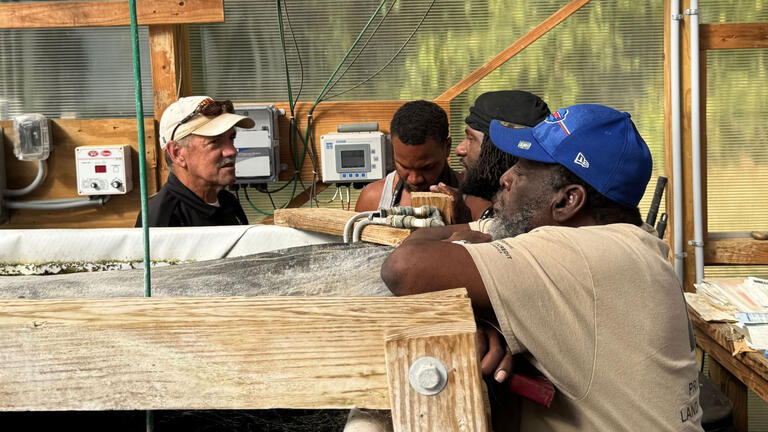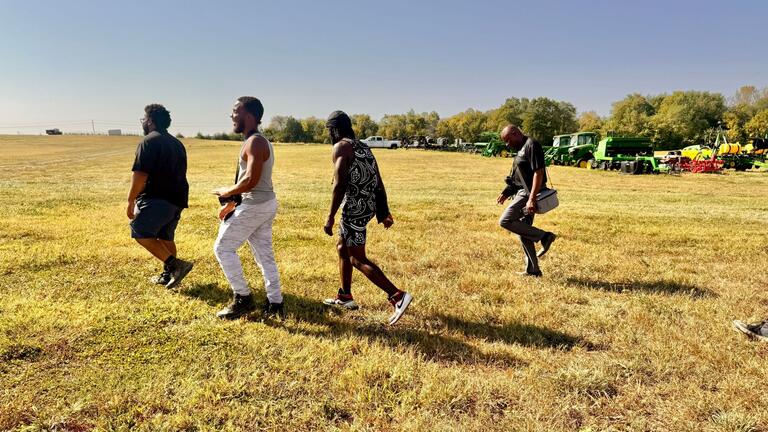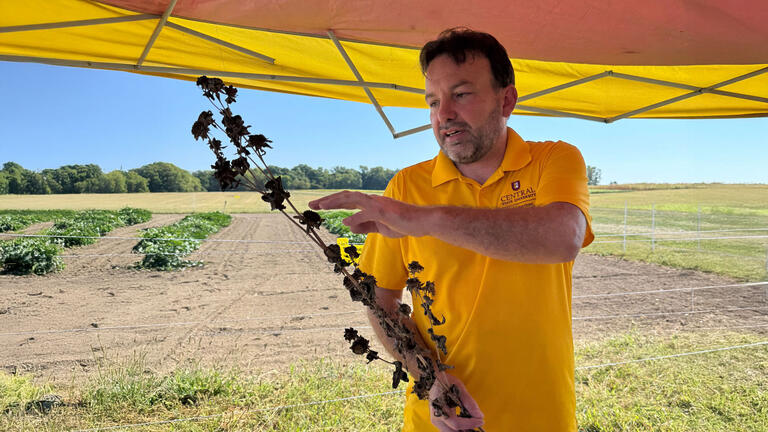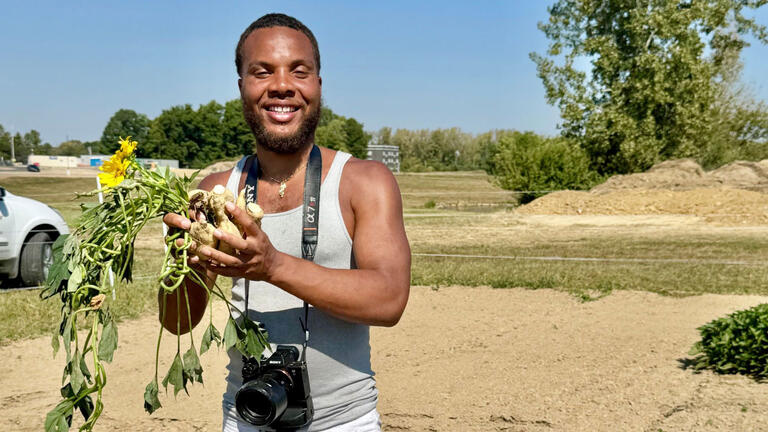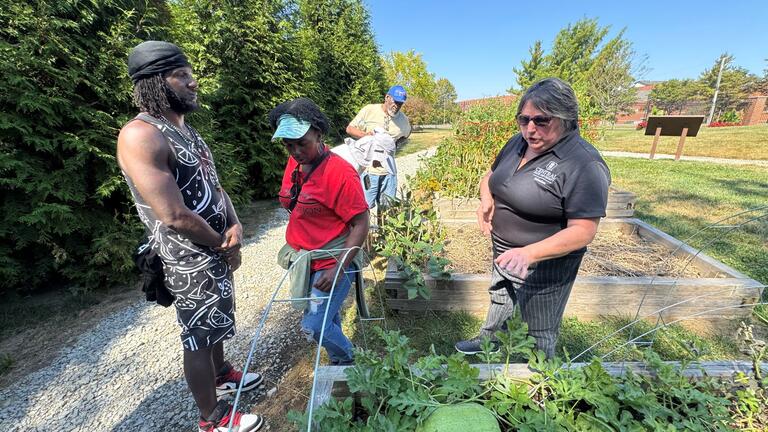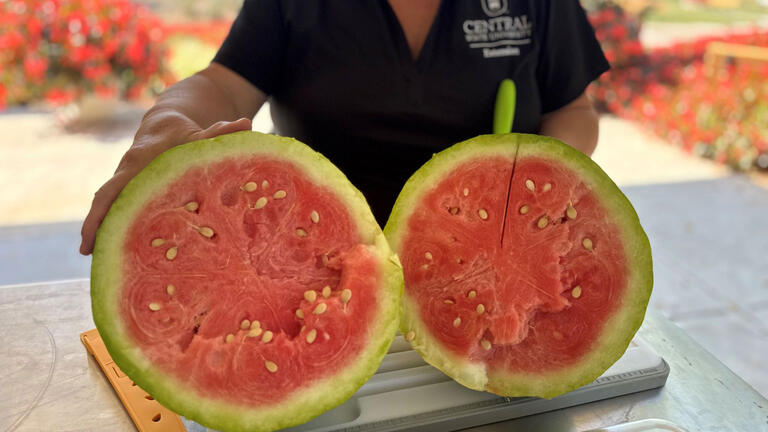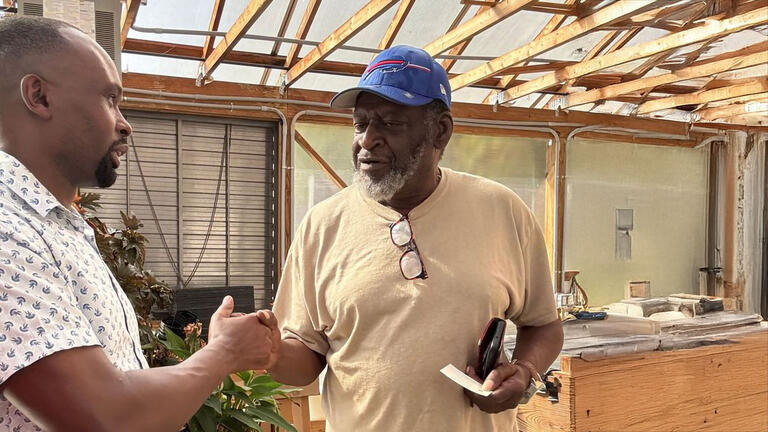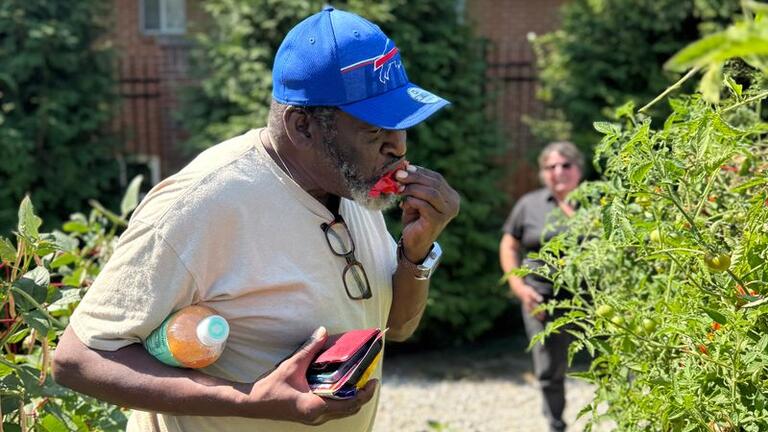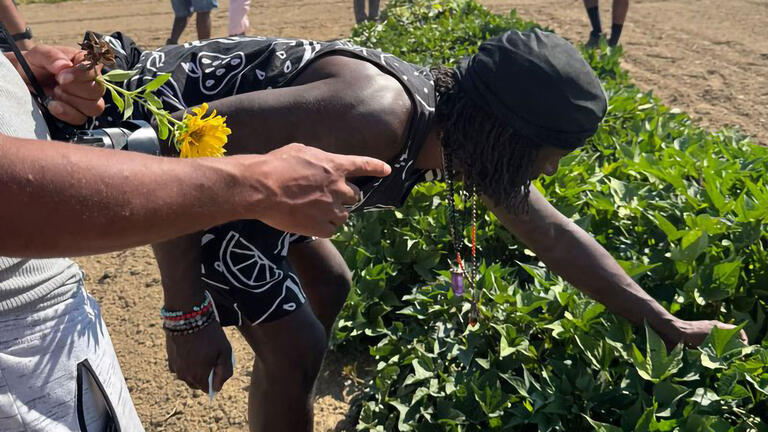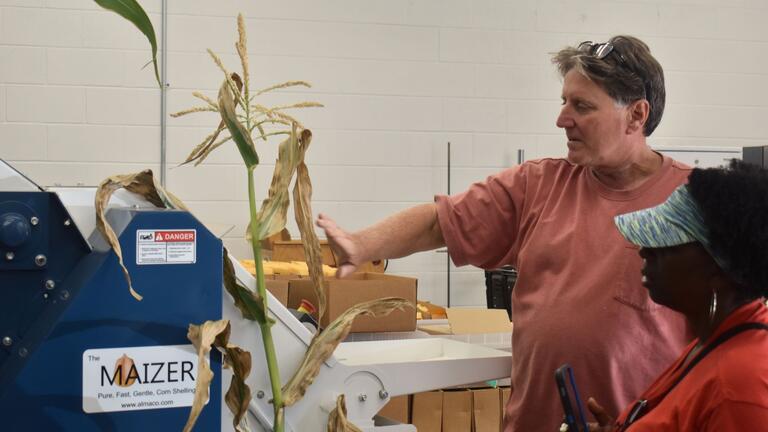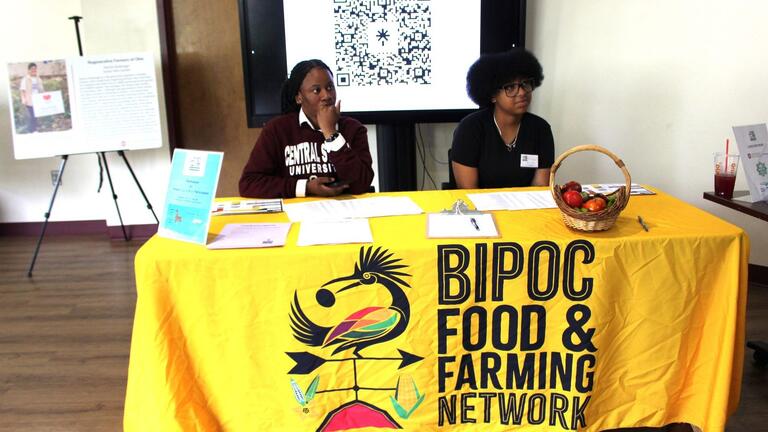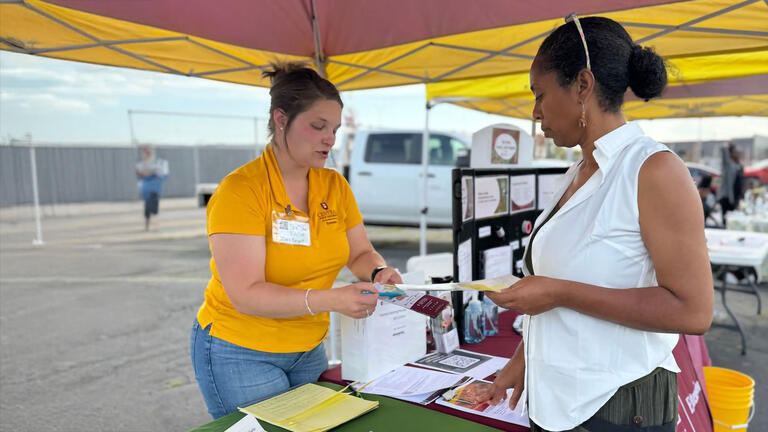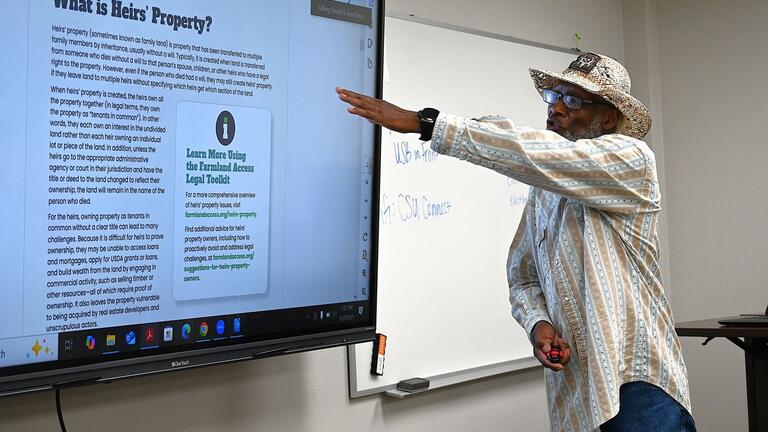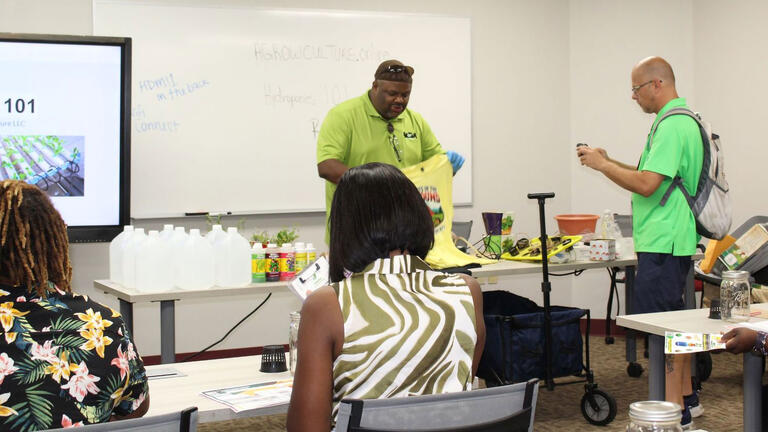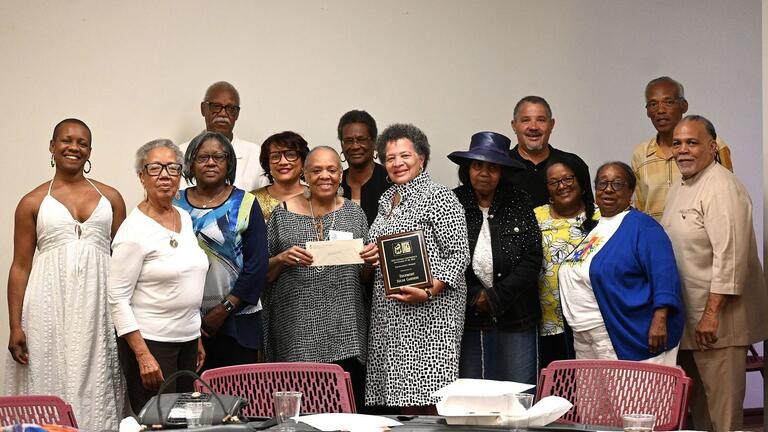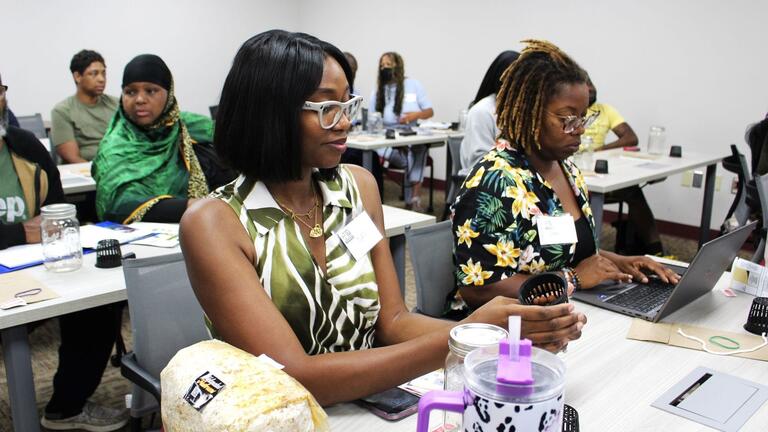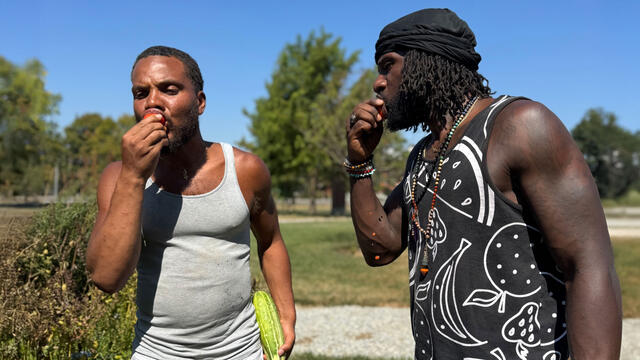
For BIPOC Food and Farm Network, tour of Central State University one of highlights of successful 5th annual conference
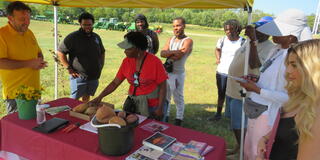
The fifth annual Black Indigenous People of Color (BIPOC) Food and Farming Network Conference drew nearly 200 attendees to Central State University’s Dayton campus on Sept. 20, capping off a two-day gathering that celebrated community, innovation, and agricultural empowerment.
Participants traveled from across Ohio and as far away as Texas, Alabama, and Florida to take part in the event, which featured a special tour of CSU’s Wilberforce campus on Friday, Sept. 19. The tour included stops at the Aquaponics Center, Seed to Bloom Botanical and Community Garden, sweet potato demonstration lot, corn-breeding lab, and hemp lab—each selected for its relevance to the visiting farmers and the availability of CSU researchers to engage directly with them.
“The idea grew out of the ongoing goal of the BFFN conference to create deeper connections between farmers, researchers, and the resources available through CSU’s Land-Grant mission,” said Alvin Wilkerson, Agriculture and Natural Resources Extension Educator. “Many BIPOC farmers and community growers expressed interest in understanding what research was happening locally and how it could be applied on their farms.”

"It's always fun to talk to a tour group about our research, but it’s always a little bit more when the group is engaging with questions. And that’s exactly what we had when we got to meet the BIPOC group," said Luke Farno, Ph.D., research associate professor and crop-breeding expert. "You could see that they took a real interest in what we were doing and how it could affect/help them."
Welcoming seven BIPOC members at their first stop at the Aquaponics Center on Sept. 19, Dr. Jose Toledo, vice president for Research and Economic Development and Director of the 1890 Land-Grant Programs, told them to ask probing questions of CSU research professors they would meet during their tour to challenge them. The researchers would welcome their curiosity about their agricultural research projects, he said.
Jada Williams, chair of the 2025 conference and owner of Fresh Roots Farm, echoed that sentiment. “Every year we look for ways to help our members connect more deeply with local agriculture,” she said. “This year, we offered a tour of CSU’s labs and demonstration plots in response to BIPOC farmers and community growers wanting to see what research is happening locally and how it could support their farms.”
"The goal of our research is to give farmers an alternative crop to grow that could help them improve their enterprises," Farno said. "And when you get questions more about the meaning behind your research, you know they understand this and are excited to know more."
For many attendees, the visit marked their first direct engagement with CSU’s research facilities. The experience left a lasting impression.
“The visit was highly significant,” Wilkerson said. “It allowed BIPOC farmers to see themselves reflected and valued within the Land-Grant system, and it highlighted CSU’s commitment to serving historically underserved communities.”
Williams noted the impact on the network’s members: “The visit gave us a firsthand look at local research and how it applies to the work that we do! It sparked new ideas, connected us with helpful resources, and strengthened our network with other BIPOC farmers and CSU faculty.”
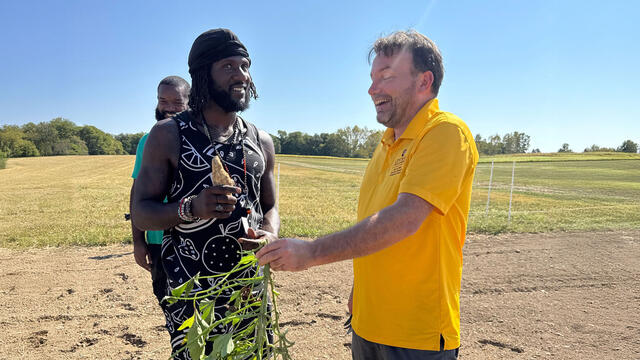
"The goal of our research is to give farmers an alternative crop to grow that could help them improve their enterprises. And when you get questions more about the meaning behind your research, you know they understand this and are excited to know more."
BIPOC members walked away with practical insights and a renewed sense of connection to CSU’s ongoing agricultural programming, Wilkerson said. “Visitors left with a better understanding of CSU’s research priorities, practical insights they could take back to their farms, and a sense of how to stay connected with ongoing Land-Grant programming,” he added.
Farno echoed Wilkerson's sentiments. "It shows that once you get to a place where you have a product ready for farmers to use there are farmers who are excited to use it. And that makes it all worth it," according to Farno.
Williams said the tour’s resonance with BIPOC members made the visit memorable. “Seeing the labs and demonstration plots in action really stood out. Being able to ask questions and see research applied on the ground made it practical and meaningful for the work we are doing at home.”
